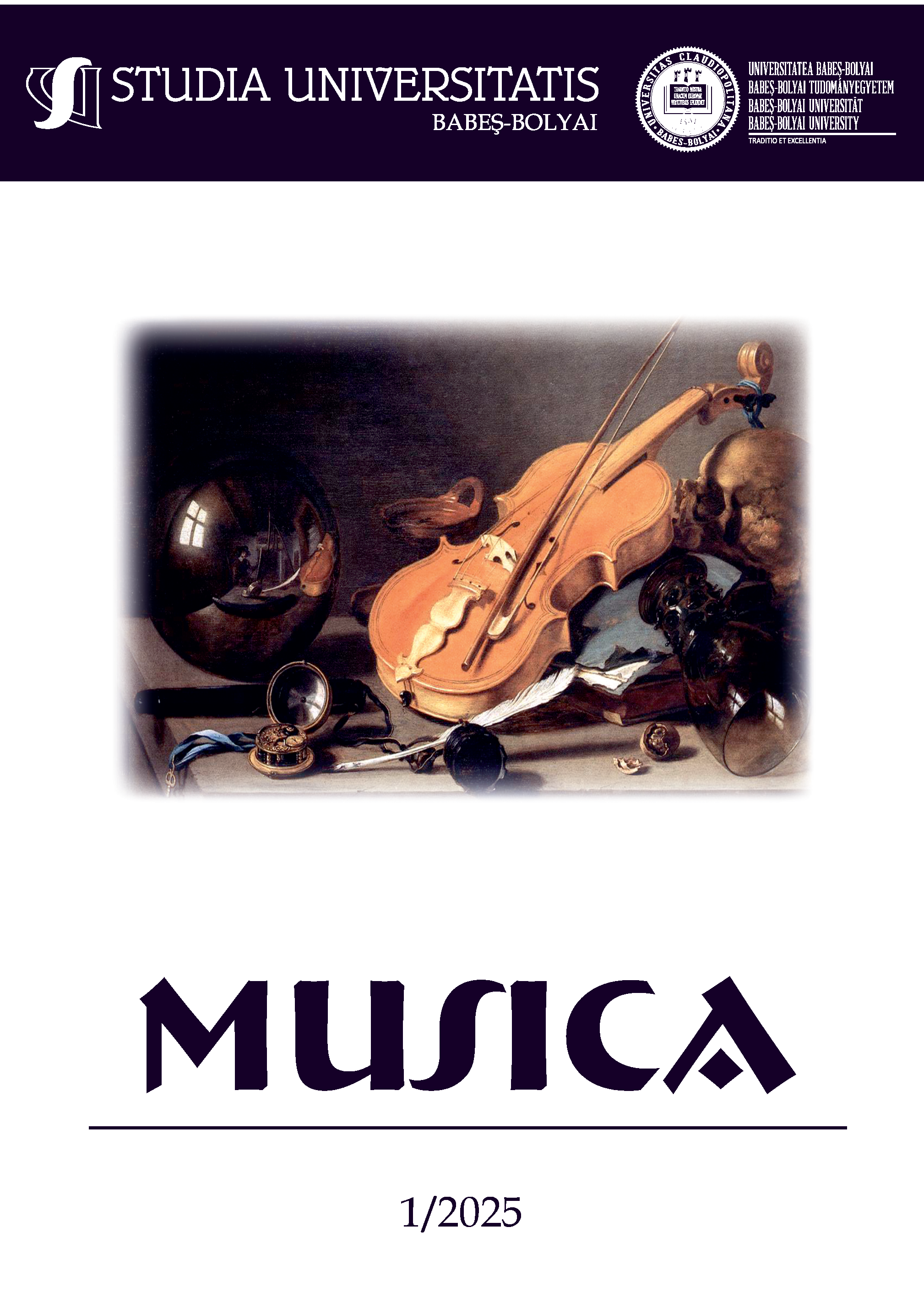Considerations Regarding Vocal Technique and Style in Various Treatises from the 17th Century
DOI:
https://doi.org/10.24193/subbmusica.2025.1.10Keywords:
voice, word-painting, singing, vocal registers, vibratoAbstract
The early 17th century witnessed the establishment of Italian vocal art, that would become a reference point for other vocal idioms and the source of bel canto. Italian singers and their art were considered examples worthy of imitation, numerous German or French sources referring to the vocal mastery of the Italians. The present study aims to present several European treatises of the 17th century — Italian, Spanish, German, and French — gradually revealing the evolution of European vocal art, from the early Baroque and its seconda prattica, to the final decades of the century, marked by the growing dispute between the Italian and French style and vocal technique. Throughout the study, similarities and differences are pointed out, revealing that the requirements regarding vocal technique are rather similar for all the singing idioms. What distinguishes the various schools of singing are aspects related to the particularities of the language, that also leads to the adjustment of certain technical demands. Secondly, questions regarding style or the execution of ornaments seem to set the Italian and French vocal idioms apart. The present article represents the first part of a research that is dedicated to the analysis of various historical sources of the 17th and 18th centuries — as valuable milestones for the establishment of the great 19th century singing methods. Historically informed performances require the singer to become acquainted with the historical period to which a particular composition belongs, its treatises and other theoretical sources of the period, eventually arriving to a better understanding of the score and a more accurate construction and delivery of the vocal discourse. Finally, the authors wish to emphasize that the historical sources referred to in the current study represent only a small portion of the theoretical writings of the period, and that the chosen works were considered representative for the current research — but not necessarily the most important.
References
1. Bacilly, Bertrand de. Rémarques curieuses sur l’art de bien chanter. Paris: Guillaume de Luyne, 1671.
2. Bernhardt, Christoph. Von der Singe-Kunst oder Manier. Ca. 1650. Translation by Sion M. Honea available on-line: https://www.kastrat.se/_doc/Bernhard%201657.pdf
3. Caccini, Giulio. Le Nuove Musiche. English translation by H. Wiley Hitchcock. Madison, WI: A-R Editions, 1970, p. 98. [English translation of Caccini’s 1602 [Le Nuove Musiche].
4. Cohen, Albert. “Jean Millet 'de Montgesoye (1618–1684)” in Recherches sur la musique française classique, vol. 8, Paris, Éditions A. et J. Picard, 1968.
5. Doni, Giovanni Battista. Lyra Barberina Amphicordos: accedunt eiusdem opera. Edited by A.F. Gori and G.b. Passeri in 2 volumes [Trattati I and Trattati II]. Firenze: Ant. Franc Gorius, 1763. vol. II, Trattato della Musica Scenica.
6. Friderici, Daniel. Musica figuralis oder new Singekunst. Reprint edited after the 1614 edition by Erns Langelütje. Berlin: R. Gaertner, 1901.
7. Herbst, Johann Andreas. Musica practica sive instructio pro symphoniacis (in first edition). Nurenberg: J. Dümlers, 1642.
8. Karácsony, Noémi; Rucsanda, Mădălina Dana. The Evolution of the French Chanson during the Renaissance: From the Parisian Chanson to the Pléiade Chansons, and the Air du Cour in Studia UBB Musica, LXVIII, Special Issue 1, 2024 (p. 83–100).
9. Palisca, Claude V. The Florentine Camerata: Documentary Studies and Translations. Music Theory Translation Series. New Haven, CT: Yale University Press, 1989.
10. Palisca, Claude V. Baroque Music. Third Edition. Englewood Cliffs, New Jersey: Prentice-Hall History of Music Series, 1991.
11. Praetorius, Michael. Syntagma Musicum III. 1619. Translated and edited by Jeffery Kite-Powell. Oxford Early Music Series. Oxford University Press, 2004.
12. Reese, Gustav. Music in the Renaissance. New York: Norton, 1959.
13. Rousseau, Jean. Traité de la viole. Paris: Ballard, 1687.
14. Sanford, Sally. National Singing Styles in A Performer’s Guide to Seventeenth-Century Music, edited by Stewart Carter. Bloomington & Indianapolis: Indiana University Press, 2012.
15. Stark, James. Bel Canto: A History of Vocal Pedagogy. University of Toronto Press, 2003.
16. Strunk, Oliver. Source Readings in Music History. From Classical Antiquity through the Romantic Era. New York: W. W. Norton & Company Inc., 1950.
17. Thomas, Barbara E. Jean Millet's L’Art de bien chanter (1666): A Translation and Study. Thesis. Graduate School of the University of North Texas, 1998.
18. Ulrich, Bernhard. Concerning the Principles of Voice Training During the A Cappella Period and until the Beginning of Opera (1474–1640). Translated by John W. Seale. Minneapolis: Pro Musica Press, 1973. [First published as Die Grundsätze der Stimmbildung während der A Cappella Periode und zur Zeit des Aufkommens der Oper 1474–1646 (Leipzig: Breitkopf und Härtel, 1912)].
19. Wistreich, Richard. Vocal performance in the seventeenth century in The Cambridge History of Music Performance, edited by Colin Lawson and Robin Stowell. Cambridge University Press, 2012.
20. Zacconi, Lodovico. Prattica di musica utile et necessario si al compositore. Venezia: Girolamo Polo, 1592.
Downloads
Published
How to Cite
Issue
Section
License
Copyright (c) 2025 Studia Universitatis Babeş-Bolyai Musica

This work is licensed under a Creative Commons Attribution-NonCommercial-NoDerivatives 4.0 International License.



